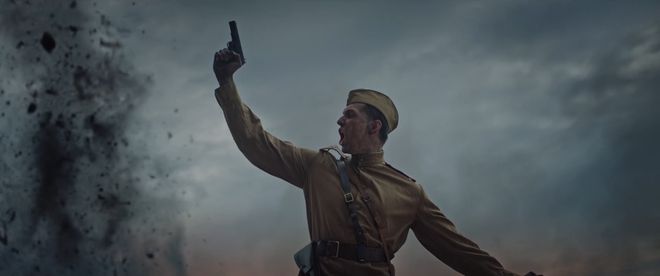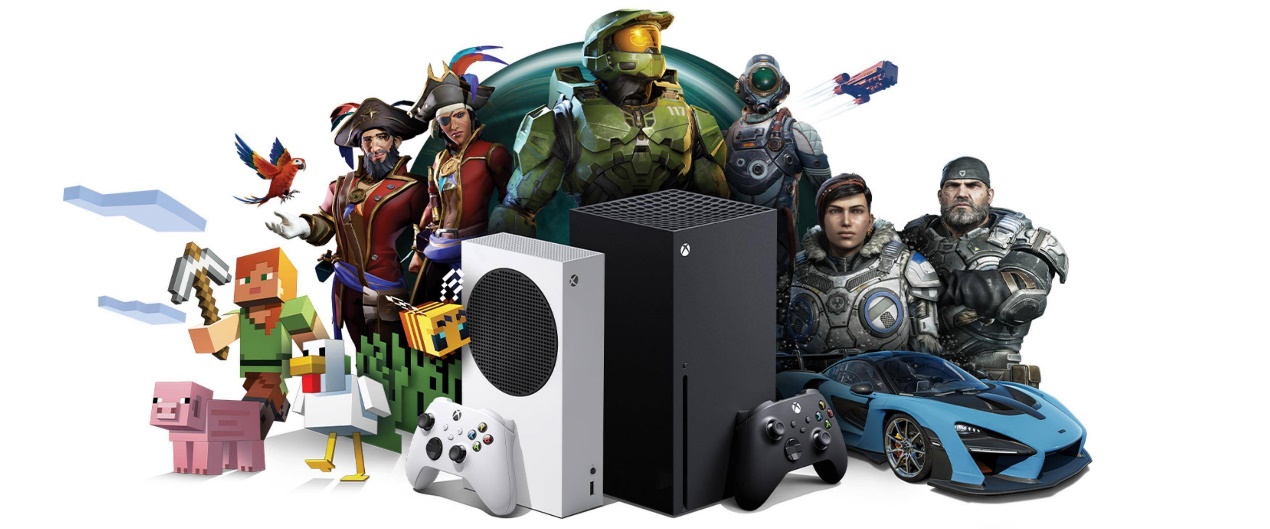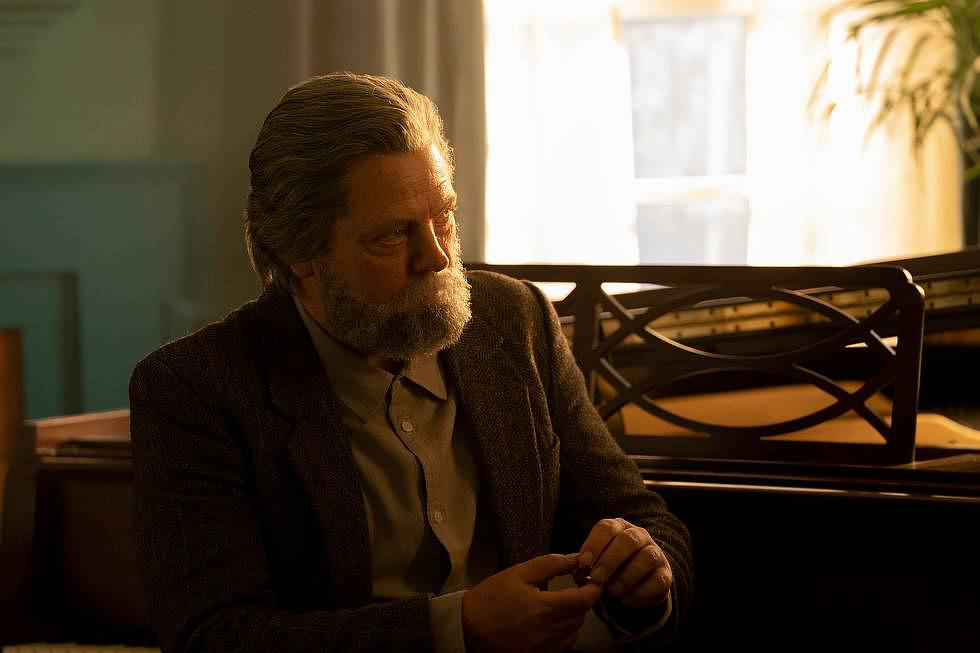Over 4 million troops and 13,000 tanks! How important is command in modern mechanised warfare?

The Second World War, one of the most important and destructive wars in the history of mankind, was unprecedented in its scope, the number of countries involved, the number of people killed and injured in the war, and the huge damage to property. In particular, the Soviet-German battlefields on the European continent were the most ambitious, fiercest and deadliest sub-battlefields, like the familiar battles of Kiev, Moscow and Stalingrad …….
And when we revisit these famous battles in the history of warfare today, we may feel that many of the mistakes made by the commanders of the losing side were too simple, and many of us have even imagined that if I were in command, I would have been invincible and won all the battles …… But was this really the case?
The premise of all this is based on today’s God’s perspective: we have the most detailed information on both sides of the battle and we know the battlefield like the back of our hand. But if you put yourself in the shoes of the commander of one of the armies at the time, you have to identify the valuable information from the complexities of the intelligence and adjust your deployment in time to minimise mistakes and maximise your chances of victory.
Today, we return to the Battle of Kursk, which took place in July and August 1943, to see what mistakes the Soviet and German commanders made and what wise moves they made in the largest mechanised war in the history of human warfare, in which over four million troops, 13,000 tanks and self-propelled guns, 69,000 artillery pieces and 12,000 aircraft were committed on both sides.
As we all know, Nazi Germany was able to sweep through Western Europe at the beginning of the Second World War on the basis of the “Blitzkrieg”, and the decisive role in the “Blitzkrieg” was played by the armoured forces, which at that time were recognised as the world’s most powerful fighting force. The German armour was recognised as the most powerful assault force in the world and was the most effective iron cavalry in Nazi Germany’s campaign.
Although this force had achieved good results in the Soviet Union and Germany in the early years of the war, Nazi Germany had lost the strategic initiative with two successive defeats at the battles of Moscow and Stalingrad. Hitler therefore decided to regain the strategic initiative by launching a decisive offensive campaign in the Kursk region in the summer of 1943.
The German commander’s perspective.
There is no doubt that the burden of the offensive once again fell on the German panzers, but the commanders, who were in command of this “heavy fist to break through the closed Soviet defences”, made a number of fatal mistakes.
The first was blind self-confidence. After Manstein took over the entire Army Group South, the Kursk salient emerged after the battle for Kharkov, when he beat the reckless Soviet commander Vadudin out of Kharkov. For the Germans, who were adept at fighting deep, circuitous siege battles, the German General Headquarters was adamant that the German mechanised forces could be fully deployed on a wide front, while the unchallenged Soviet forces would be decimated by the direct impact of German armour. The German tactics were too homogeneous and their air-ground ‘blitzkrieg’ style of warfare was almost indistinguishable from that of two years earlier, whereas the Soviet Army was not the same as it had been in 1941.
The same could be said of equipment, Hitler had no regard for the cheap and productive No.3 assault guns that had done so well in the previous campaign, but was obsessed with advanced equipment like the Tiger, Leopard and Ferdinand. However, these were so expensive to manufacture and so few in number that even if they were able to “take one for the team” it would have been difficult to stop the Soviet “flood of steel” of the time. And although the Soviet T-34/76 medium tank was an absolute underdog against the Tiger, it even had the upper hand in terms of firepower and mobility against the majority of the German No.3/4 tanks, which were the “backbone” of the army.
Secondly, the German high command completely ignored intelligence …… although the Soviet Union had accurately predicted the objectives of the German offensive before the war, laid a large number of anti-tank mines in large depth defensive positions and built a large number of fortifications to match the anti-tank weapons from near and far. This caused the German tanks to come under fire from all sides as soon as they entered the Soviet positions, but the German commanders ignored this information and persisted in their attack.
The Soviet commander’s perspective.
The Soviets in 1943, on the other hand, had anticipated the timing and location of the German attack and were superior in strength and equipment, but still adopted a strategy of defence before counter-attack and were fully prepared, even carrying out a counter-preparation with artillery fire from the defending side, which was very rare in the history of warfare.
Secondly, a defence system of great depth was constructed, with a deep echelon of defensive territory at all levels from the front line to divisions, armies and groups, and a strong reserve was deployed to constantly counter-attack the flanks of the attacking German forces. Instead of being forced to organise a defence, an active defence was used to wear down the Germans, and the German onslaught was successfully resisted. In the subsequent counter-attack phase, absolute superiority of forces and equipment was concentrated in decisive directions.
And, for the first time, armoured units were used on a large scale: in defence, independent tank regiments, self-propelled artillery regiments or tank brigades were usually deployed in the first line of defence as anti-tank reserves for armies or divisions, either at anti-tank support points or in tank ambushes. In the second line of defence, on the other hand, tank corps or tank groups are deployed to launch counter-assaults against the advancing enemy or to hold key defensive hubs, thus greatly increasing the stability of the defence. In the counter-attack, the armour was concentrated and used as the main means of expanding a tactical victory into a battle victory after breaking through the German lines. It was also the first time that the Soviets had used a concentrated tank group as an armoured striking iron fist.
In addition, artillery and aviation received a great deal of attention from the Soviet command during this campaign, and both in the defensive and counter-attack phases, the Soviets placed great emphasis on using artillery in large concentrations to great effect. Soviet aviation, on the other hand, was used primarily to seize and maintain air power and to support ground forces. Aggressive air combat and raids on German airfields enabled the Soviets to seize air power from the defensive phase of the battle and to hold it firmly until the end of the campaign.
However, the Soviets’ performance at Kursk was not flawless, such as the lack of ability to break through the German lines quickly, which meant that the Soviet infantry, artillery and armour struggled to work in unison. It was no longer realistic to rely solely on panzers to break through in one fell swoop, as had been the case earlier in the war. After all, both the Soviets and the Germans had by now equipped their units with a large number of anti-tank weapons at all levels, and once the armour was disconnected from the infantry and artillery, they would be left alone and passive.
This was most clearly illustrated by the heavy losses suffered by the Soviet 5th Konzerkorps when it was cut off from direct infantry and artillery support. The Soviets realised this from the Battle of Kursk, and at this time equipped their infantry and artillery with a large number of American-aided “ten-wheelers”, which greatly increased the mobility of their troops.
Throughout the Battle of Kursk, the Soviets paid a greater price than the Germans, losing far more men and equipment than the Germans, but broke the “seasonal curse” of the Soviet-German battlefield – i.e., in summer and autumn, the Germans attacked and defended, and the Germans had the upper hand; in winter and spring, the Soviets attacked and defended, and the Soviets had the upper hand. In winter and spring, the Soviets attacked and defended, and the Soviets took the initiative.
In the Battle of Kursk, the Germans, even in the summer and autumn, advanced less than 50 km on both fronts, while the Soviets advanced 150 km in the counter-offensive phase, eliminating the Orel and Belgorod-Kharkov salients in one fell swoop. Since then, coupled with the Allied landings in Italy, Nazi Germany had to start facing a two-front war and the balance of the Soviet-German battlefield officially tipped to the Soviet side.
The Battle of Kursk made the Soviets realise the importance of synergy between infantry, artillery and armour, and I have experienced this in a handheld game I recently played called Medal of War. The game features over 200 types of weaponry, with nearly 10 types of troops such as infantry, light/medium/heavy tanks, anti-tank destroyers, anti-tank guns and howitzers. The range, marching speed, armour and armour piercing values, reloading time and so on vary from soldier to soldier, perfectly recreating the realistic concept of equipment “mutually exclusive”.
For example, in terms of range, most units in the game such as infantry and tanks have a range of only 2 frames, while artillery has a range of 4 frames. So if you only build a bunch of tanks, especially in a multiplayer battlefield, you won’t be able to spread your tanks. Not only will they get stuck in each other’s positions because of the short range, but they will also be “washed” by the enemy’s artillery, and will probably be crippled before they even get to the opposite side. However, if you only focus on developing artillery, the artillery itself has too little blood, and there is no guarantee of battlefield survival. So the only way to make the most of the power of large corps synergy is to mix and match them wisely according to their characteristics.
I also like to use the Soviet “deep battle doctrine” in my games, starting with a super-heavy tank/heavy tank unit with some infantry mixed into a synthetic group as the first echelon. As these troops have the advantage of armour in the game and are thick with blood (infantry can also build fortifications in situ), they are ideal for use as assault troops to tear a hole in the enemy’s defences. As the first echelon pounds, it is imperative that the rear of the line is supplemented by heavy supporting artillery to cover the fire and continue to expand the existing breach on both flanks, creating the conditions for the second echelon to develop a victory.
After that it is time to offer my killer – a tank group consisting of a large number of highly mobile light and medium tanks. The medium tanks are mainly responsible for developing deep attacks in the direction of the enemy’s main breakthrough, while the light tanks use their superb mobility to develop deep attacks in the direction of some secondary breakthroughs and harass the enemy’s long-range artillery. Ultimately, the first and second echelons will form a siege on the enemy’s entire heavy group and win the battle in one fell swoop.
It has to be said that Medal of War, as a game for “military enthusiasts”, gives players a lot of room for manoeuvre. The unique mechanics and gameplay allow military fans to give full play to their commanding talents, allowing them to not only play such tawdry operations as encircling, intercepting and kiting in the middle of the road, but also to achieve miraculous turnarounds by winning with less and winning with more through correct deployment in the big picture strategy.




